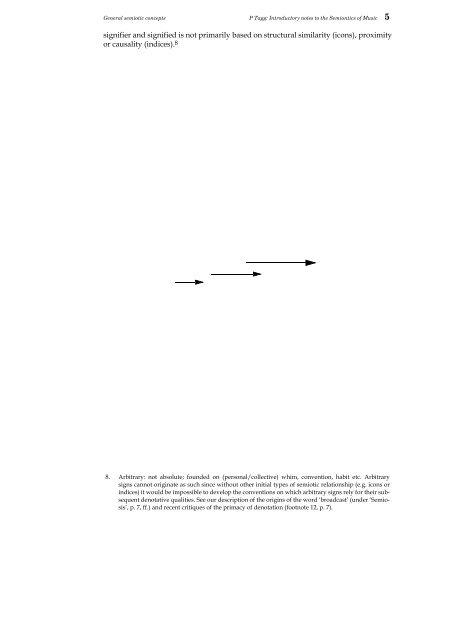Introductory notes to the Semiotics of Music - Philip Tagg's home page
Introductory notes to the Semiotics of Music - Philip Tagg's home page
Introductory notes to the Semiotics of Music - Philip Tagg's home page
Create successful ePaper yourself
Turn your PDF publications into a flip-book with our unique Google optimized e-Paper software.
General semiotic concepts P Tagg: <strong>Introduc<strong>to</strong>ry</strong> <strong>notes</strong> <strong>to</strong> <strong>the</strong> Semiontics <strong>of</strong> <strong>Music</strong> 5<br />
signifier and signified is not primarily based on structural similarity (icons), proximity<br />
or causality (indices). 8<br />
8. Arbitrary: not absolute; founded on (personal/collective) whim, convention, habit etc. Arbitrary<br />
signs cannot originate as such since without o<strong>the</strong>r initial types <strong>of</strong> semiotic relationship (e.g. icons or<br />
indices) it would be impossible <strong>to</strong> develop <strong>the</strong> conventions on which arbitrary signs rely for <strong>the</strong>ir subsequent<br />
denotative qualities. See our description <strong>of</strong> <strong>the</strong> origins <strong>of</strong> <strong>the</strong> word ‘broadcast’ (under ‘Semiosis’,<br />
p. 7, ff.) and recent critiques <strong>of</strong> <strong>the</strong> primacy <strong>of</strong> denotation (footnote 12, p. 7).














